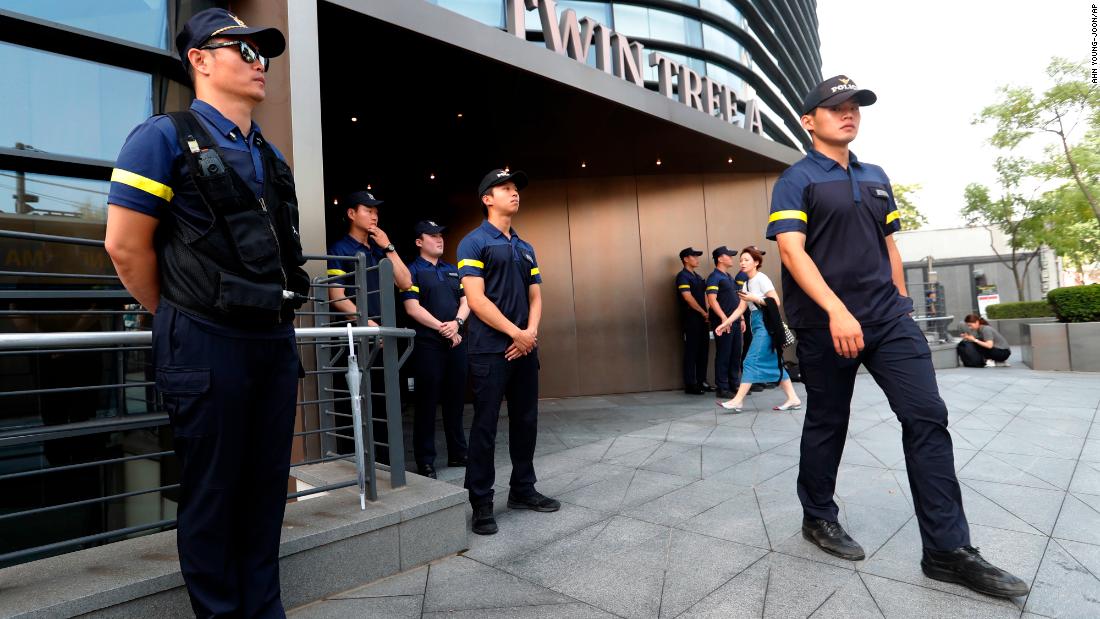KYOTO, Japan — He can’t get the women out of his mind.
A day after an apparent arson killed 33 people at an animation studio in the Japanese city of Kyoto, a neighbor, the 81-year-old Ken Okumura, remembered seeing several women jump from the building’s second floor. They were so badly burned that blood was coming from their noses, and all of their clothes but their underwear were gone.
“Just horrible,” Mr. Okumura said on Friday, as the smell of burning still hung in the humid air.
Much was still unknown about the Thursday fire, which appeared to be Japan’s worst mass killing in decades. The police identified Shinji Aoba, 41, as a suspect in the case, based on statements they said he made when he was apprehended. They said Mr. Aoba was being treated for severe burns and had not been arrested.
Japanese news reports, citing unnamed police sources, said the suspect had told the police that he started the fire because he believed the studio, Kyoto Animation, “stole a novel” from him.
NHK, the public broadcaster, reported that Mr. Aoba had served time in prison for robbery and that he was being treated for an unspecified mental illness. The report, which cited an unidentified source, said he lived in the city of Saitama, near Tokyo.
As of Friday, none of the names of the 33 people killed in the fire had been released. What was known was that almost two-thirds of them — 20 — were women.
That appears to reflect a trend in Japan’s animation industry, as well as the hiring practices at Kyoto Animation. There are about twice as many women as men among working animators in their 20s, according to Daisuke Okeda, a lawyer and adviser to the Japan Animation Creators Association.

Male animators still lead the industry, and they outnumber women among animators over 35, Mr. Okeda said. But Kyoto Animation — known as KyoAni to its fans — is known for employing more women, particularly younger women.
More than half of the workers in the burned building were women, based on figures released by the Kyoto fire officials about the dead as well as the dozens of injured.
On Friday, a man distraught about his 21-year-old granddaughter, who worked at Kyoto Animation, told NHK that he could not find her name on lists of people taken to local hospitals.
“She was my pride,” the man, Kazuo Okada, 69, said of his granddaughter, Megumu Ohno. “Her name started appearing on the screens of anime movies. I was so happy to see that. I was proud of her. I want to see her face soon.”
Kyoto Animation was co-founded by Yoko Hatta and her husband, Hideaki Hatta, in 1981, and went on to produce high-quality, meticulously detailed works. They included “The Melancholy of Haruhi Suzumiya,” a science fiction series based at a high school, and “Lucky Star,” whose intelligent female protagonist is distracted from her studies by anime and video games.
Kyoto Animation also played a role in the careers of two star women directors of television anime, said Patrick W. Galbraith, a lecturer at Senshu University who has written extensively about the art form. “That’s significant,” he said.
Naoko Yamada directed the series “K-On!” for Kyoto Animation, and Hiroko Utsumi directed “Free!” a series about a boys’ swimming team. “Free!” stood out in the anime world, often known for being preoccupied with the female form, because it focused on the male body instead.
Ms. Utsumi has since moved to another anime studio, Mappa. According to Nikkan Sports, a daily newspaper, Ms. Yamada was not hurt in the fire.
Kyoto Animation is also unusual among anime studios in that it pays its workers salaries, rather than freelance fees. Japan’s animation industry has been accused of exploiting workers, who work long hours for low wages.
Ironically, KyoAni’s system may have exposed its workers to greater risk by concentrating so many of them in one studio. “It’s a rare system in the industry,” Mr. Okeda said.
The arsonist is believed to have purchased about 10 gallons of petroleum at a gas station near the studio, about half an hour before starting the fire. According to police reports, the man brought it to the studio in two cans, on a hand cart, then poured it out on the building’s first floor and ignited it with a lighter.
“We saw yesterday that anyone can cause mass killings and tremendous damage with cheap and easy tools anyone can obtain in daily life,” said Daiju Wada, a lecturer on security at Seiwa University in Chiba, Japan, and a security consultant. “It’s difficult not to sell gasoline to people.”
Hatsumi Yamashita, 74, who teaches dance at a nearby community center where firefighters treated some of the injured in a garage, remembered seeing one woman sitting on a staircase, wearing what Ms. Yamashita first thought was a jet-black outfit. “But when she laid down on the floor, I saw she was so burned that she was almost naked,” she said.
“I could never forget this young woman,” Ms. Yamashita said.
https://www.nytimes.com/2019/07/19/world/asia/japan-fire-kyoto-animation.html
2019-07-19 10:33:10Z
52780334975248


